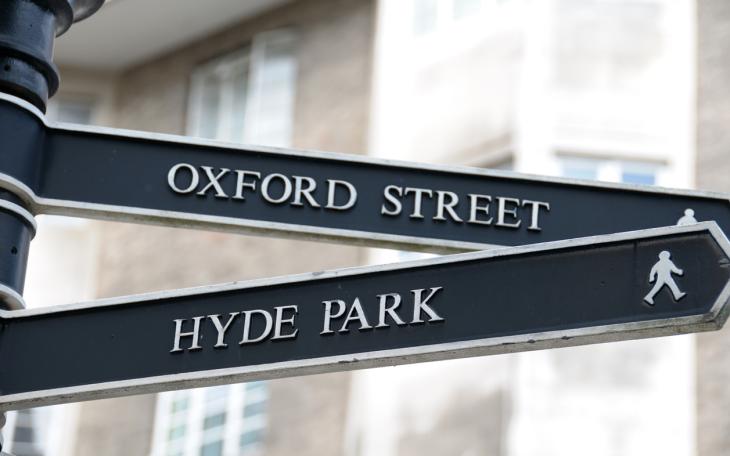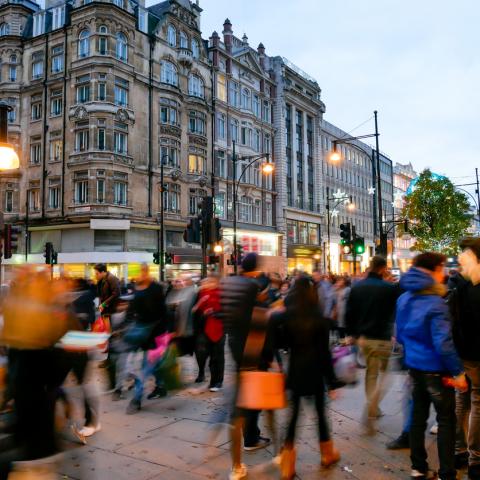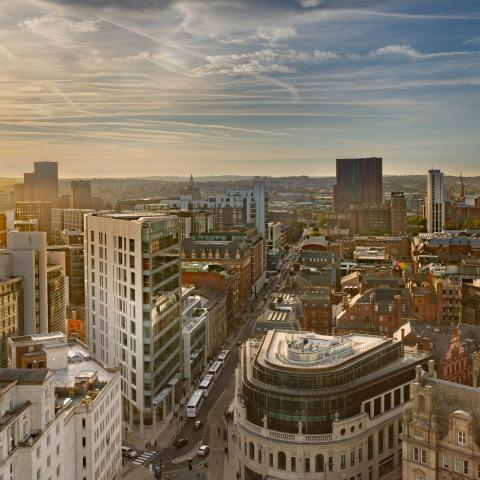What might the M&S retrofit row mean for the race to net zero?

Remember the row over Marks & Spencer’s plans to create a new flagship store on Oxford Street? You could be forgiven for forgetting given the long, hot, eventful summer we’ve just had, but the retailer’s plans made headline news in June after coming under fire from sustainability campaigners calling for an end to demolition and new build.
The project, approved by Westminster council and the Mayor of London, was called in by the then secretary of state Michael Gove over the campaigners’ concerns, despite the scheme targeting some of the industry’s highest sustainability standards. In response, M&S said it was “bewildered and disappointed” at the secretary of state’s “political grandstanding”, accusing Gove of preferring “a proliferation of stores hawking counterfeit goods to a gold-standard retail-led regeneration of the nation’s favourite high street”. Ouch.
While this all made for a good media row, there is actually a lot more at stake in the public inquiry than just the fate of M&S’s store. Indeed the public inquiry could have significant ramifications for property’s wider decarbonisation agenda and the road map to net zero. So what are the issues? Why do they matter so much? And what might we learn from the row?
Of course the key objection to the project was it involved the demolition of the existing building, which retrofit campaigners claim is an unsustainable approach in the climate emergency due to the amount of embodied carbon in the structure that would be lost. Making the project a cause celebre for their campaign, they argued the most sustainable approach would be to refurbish and modernise the existing building.
The problem is the available evidence suggests that’s not the case. As M&S has made clear, the project team looked at a wide range of options for the building, including both light touch and heavy refurbishment, as well as new build. M&S commissioned Arup to undertake a whole life carbon (WLC) assessment, which gives the most accurate picture of a building's carbon impact on the environment. As WLC reports factor in the all-important embodied carbon of a structure, including the materials and construction as well as operational carbon, they are the approach to assessing sustainability championed by the UK Green Building Council in its roadmap for the industry to achieve net zero.
According to Arup’s WLC report on the project, new build – not retrofit - was the most sustainable approach. This is because over the life span of a building the highly sustainable energy efficient new build will save significantly more carbon when compared to the inefficient older structure. "I would liken this to a discussion about a not-very-well-performing diesel car from the 1970s," Fred Pilbrow, the architect for the project, told Dezeen. "And what we're trying to do is replace it with a Tesla. In the short term, the diesel car has got less embodied carbon. But very quickly, within between nine and 16 years, we will be ahead on carbon because our Tesla will perform better."
As Pilbrow argued, the reality is that for some buildings the most sustainable path is to demolish and rebuild, given the carbon intensity that may be involved in refurbishing and extending a building’s life and the ongoing inefficiency of the older structure. Westminster council accepted these arguments, based on the evidence provided, as did the Mayor of London. The campaigners from Retrofirst did not, suggesting the carbon calculations were a sham. They commissioned their own sustainability study which reached different conclusions, while batting away suggestions their report can’t possibly be based on the same level of building data.
There is clearly an irony in those arguing for ‘retrofirst’ on the basis of climate science dismissing the evidence produced by building sustainability experts, when that evidence doesn’t suit their narrative. M&S’s anger at Gove is therefore understandable. On paper they had done the right thing, commissioning a blue-chip engineer to consider all options for the asbestos riddled buildings and undertake a rigorous WLC assessment to determine the most sustainable approach. Yet here they are accused of acting unsustainably and facing a high-profile public inquiry.
M&S’s project is also hardly the only high-profile London scheme that involves demolition. For example, not far away in Victoria another department store is due to be demolished. The sprawling House of Fraser building at 105 Victoria Street will be replaced by a new highly sustainable office building, which will also be net zero in operation, though in this case the upfront carbon cost of the 500,000 sq ft new build will be offset after just six years of operation, compared to the 9-16 years under the M&S plans. The scheme achieved planning in April 2021 and has wholly avoided the controversy that has embroiled M&S.
That may in part be because it has limited heritage appeal or architectural merit – it’s not the sort of structure SAVE Britain’s Heritage tends to take up the baton for, though no doubt there are some lovers of 1970s concrete architecture who could make a case for it.
In this sense M&S has been unfortunate. Its project has brought together an alliance of heritage and sustainability campaigners that spans the political divide. Dating from 1929, the Oxford Street flagship looks like the sort of building (actually a collection of three buildings) that should be saved, even though it is not listed and was excluded by Historic England from surrounding Conservation Areas, suggesting the architecture is of relatively limited merit.
And whereas the plans for 105 Victoria Street achieved planning while the country was still in the grips of the Covid pandemic, the M&S project faced committee last November, at which point the Retrofirst campaign had also built considerable momentum and gained mainstream attention. It just needed a project to rally around.
The public inquiry will now determine the merits of the scheme. With Liz Truss’s government eager to champion growth and far less inclined to take up green causes M&S has reason to be optimistic that the project will find favour with ministers. But much will rest on the inquiry’s view of the project’s WLC report. Will it accept the report’s calculations and the conclusion that new build is the most sustainable approach? Or will it cast doubt on the sustainability assessment, as the campaigners have?
More broadly, there is also the thorny question of how urgent is urgent enough when it comes to decarbonisation? Is 9-16 years a reasonable period of time to offset the upfront carbon cost of a new build? Or is the upfront carbon cost simply unacceptable in a climate emergency, when the IPPC warn we only have three years before emissions must peak if we are to limit global warming to 1.5 degrees? In essence what is more important: creating a building that is lower carbon over the next 100 year or avoiding an upfront carbon cost now?
What is clear is if the planning inspectorate finds the WLC report wanting there could be wider ramifications for the industry’s road map to net zero. If the rigour and reliability of WLC reports is questioned and trust in their validity falls away then they risk becoming just another contested document in an adversarial planning process, little different to the viability assessments that determine a development’s affordable housing contribution, which campaigners dismiss as a self-serving fudge, not worth the paper they’re written on.
On the face of it that could be a positive outcome. Developers will expect to be challenged over their sustainability credentials so will need to ensure they are beyond reproach. But it does also mean that planning departments, already hugely under resourced, will need to have the skills and capacity to robustly assess the merits of the sustainability claims, sorting out valid assessments from those that are not. If they don’t have the capacity or expertise to do this then the risk is it will be all too easy for the loudest voices to hold sway, with planners follow the intuitive sense that a new building can’t possibly be more sustainable that keeping what is already there in place.
There is therefore much more to the public inquiry than merely whether the M&S proposals will proceed. If M&S gets the greenlight then its WLC report will have passed an important test, bolstering the process. If the plans are knocked back, the very process of producing WLC assessments in support of planning applications may well be undermined, making an already rocky road to net zero even more bumpy. Surely not something Retrofirst campaigners would want?
We hope you enjoyed this week's Property & Urban Renewal takeover for SEC Newgate News. To get in touch with our team of specialists, email property@secnewgate.co.uk










